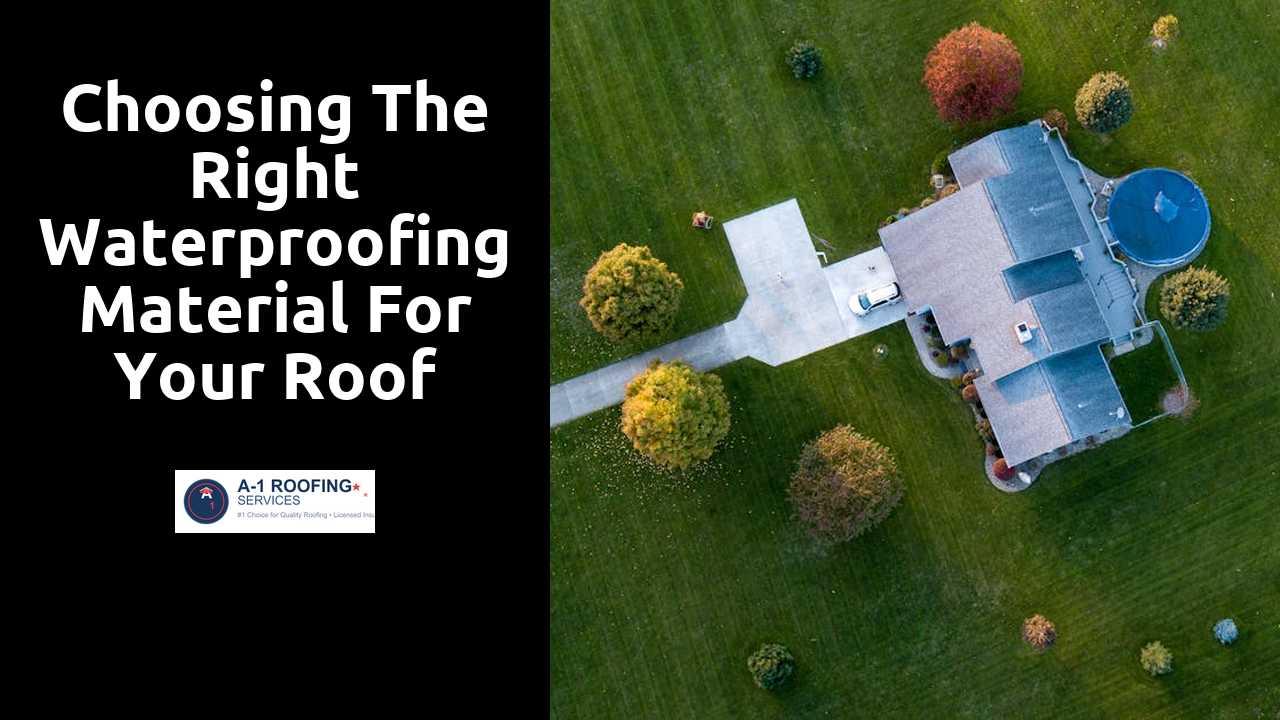
Choosing the Right Waterproofing Material for Your Roof
Table Of Contents
Cost Analysis of Waterproofing Solutions
The cost of waterproofing solutions can vary significantly based on the type of materials used and the complexity of the installation. Common roofing waterproofing materials include asphalt, rubber membranes, and liquid-applied coatings. While asphalt is often the most affordable option, its durability may not match that of more expensive alternatives. Rubber membranes, while pricier, offer excellent protection and longevity, making them a popular choice for larger projects.
When budgeting for waterproofing, it is crucial to consider both material and labor costs. DIY options can save money upfront but often lack the warranty coverage associated with professional installations. Hiring experienced contractors typically increases costs but ensures a proper application, which can prevent costly repairs down the line. Additionally, investing in higher-quality materials may lead to long-term savings by reducing maintenance and replacement needs over time.
This new blog post covers this topic in more detail.
Budgeting for Your Roofing Project
When planning a roofing project, it's essential to establish a comprehensive budget that encompasses all aspects of the work. Start by evaluating the square footage of the roof and the materials needed for waterproofing. Having a clear estimate helps prevent unexpected expenses down the line. Don’t forget to account for potential setbacks, such as weather delays or structural repairs, which can influence your overall costs significantly.
Next, consider the labor costs associated with your roofing project. If you choose professional installation, research local rates for contractors and request multiple quotes to get a sense of the market. When exploring DIY options, factor in the value of your time and any tools you may need to purchase or rent. Balancing material and labor costs will help you create a realistic budget that aligns with your financial situation.
Comparing DIY vs. Professional Installation
Homeowners often face the choice between tackling waterproofing projects themselves or hiring professionals. DIY installation can be appealing due to lower costs and the opportunity for hands-on engagement. With various online tutorials and guides available, many feel confident enough to take on the task. However, without proper experience or tools, mistakes can result in compromised roofing integrity and costly repairs down the line.
On the other hand, professional installation typically guarantees a level of expertise and quality that is hard to match. Contractors often have access to better materials and a deeper understanding of local building codes. This can result in a more efficient project timeline and peace of mind for homeowners. While the upfront costs may be higher, the long-term benefits of hiring a professional can outweigh the initial investment, especially for extensive roofing needs.
Pros and Cons of Each Approach
When considering DIY installation of waterproofing materials, one of the primary advantages is cost savings. Homeowners can avoid labor costs by taking on the project themselves. With detailed guides and abundant online resources, many find they can successfully manage the installation with a little time and effort. However, the trade-off includes the steep learning curve, potential for mistakes, and lack of expertise, which can lead to subpar results or future complications requiring professional intervention.
On the other hand, hiring professionals guarantees a level of expertise that can ensure proper installation and adherence to safety regulations. Experienced contractors often have access to high-quality materials and tools that may not be readily available to the average homeowner. The downside to this approach tends to be the higher costs associated with labor and materials, which can strain a budget. Additionally, scheduling and reliance on external contractors may introduce delays or complications beyond the homeowner's control.
Environmental Impact of Waterproofing Materials
The selection of waterproofing materials can significantly influence the surrounding environment. Many traditional options contain chemicals that may leach into the ground and affect soil and water quality. As awareness of these potential hazards grows, consumers increasingly seek alternatives that minimize ecological footprints while still providing effective roof protection. Sustainable materials can offer solutions that combine functionality and reduced environmental harm.
Innovative eco-friendly products have emerged to meet this demand, using natural components or recycled materials. These options often provide comparable durability and performance without the detrimental effects associated with conventional waterproofing solutions. Many manufacturers are now prioritizing sustainability, which reflects a shift towards greener practices in the construction industry. Investing in environmentally conscious materials not only benefits the planet but can also enhance a property's overall appeal and value.
Eco-Friendly Options Available
Sustainable roofing solutions have gained popularity, leading to the development of various eco-friendly waterproofing materials. These options often include plant-based or recycled substances that minimize environmental impact. Natural rubber membranes made from sustainably sourced rubber offer durability along with a lower carbon footprint compared to conventional materials. Additionally, some roofing systems utilize reflective coatings that reduce heat absorption, benefiting both the home and the environment.
Another innovative choice is the use of recycled materials, such as modified bitumen made from repurposed asphalt. This type of roofing not only protects against leaks but also contributes to a circular economy by recycling waste. Furthermore, many manufacturers are now producing bio-based waterproofing products that harness renewable resources. By considering these eco-friendly options, homeowners can make responsible choices that align with their sustainability goals while still ensuring effective roof protection.
Related Links
The Role of Drainage Systems in Roof WaterproofingCommon Mistakes in Roof Waterproofing and How to Avoid Them